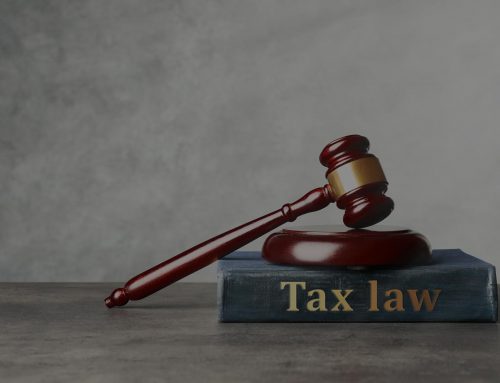CRA’s Last Resort: The Dreaded Net Worth Assessment
Background
Many aspects of the Canada Revenue Agency (“CRA”) and its tax collection measures trouble the average Canadian. But likely the most troublesome — and controversial — is the net worth assessment (“NWA”). An NWA is a tool used by the CRA in instances where it suspects you have earned or received more income than you have reported. The CRA will conduct a net worth audit to determine the increase in a taxpayer’s net worth. The CRA will calculate your net worth at the beginning of the audit period, take expenses into account, and then calculate net worth at the end of the period. Any increase in that period is presumed to be income and taxed as such. The amount is sometimes subject to a penalty as well.
As a very simplified example, if Mrs. Smith’s net worth on Jan. 1, 2018 was $800,000 and on Dec. 31, 2018 was $900,000, the CRA will assume you have earned $100,000. The CRA will then add the expenses Mrs. Smith incurred in 2018 as her costs of living – let’s just say that amount is $50,000 – and the CRA would conclude that Mrs. Smith’s income for 2018 should have been $150,000 ($100,000 change in net worth plus $50,000 of expenses). If Mrs. Smith had reported $15,000 of income in 2018, the CRA would assess an additional $135,000 – which would reflect her true taxable position in the CRA’s view.
The Law
Subsection 152(7) of the Income Tax Act states the following:
Assessment not dependent on return or information
(7) The Minister is not bound by a return or information supplied by or on behalf of a taxpayer and, in making an assessment, may, notwithstanding a return or information so supplied or if no return has been filed, assess the tax payable under this Part.
What this means is the CRA is not in any way forced to accept a taxpayer’s filing position. If they suspect your actual income is different than what you reported, they can go in and assess more income, and thus more tax.
The principles underlying the net worth method of assessment were summarized by the Tax Court of Canada as follows:
A net worth assessment involves an indirect measurement of income over a period. The net worth of an individual, that is to say, the excess of his assets over his liabilities[,] is calculated at the end of a period and at the beginning of the period. The assessment proceeds on the assumption that the total of any increase in net worth over the period (to the extent that such increase cannot be attributed to non-taxable sources such as gifts and inheritances) plus expenditures made during the period for personal consumption is the amount of the individual’s income for the period.[1]
Where an assessment, including an NWA, is made by the Minister under subsection 152(7) of the Income Tax Act, there is a presumption of validity in favour of the assessment. In other words, an NWA is presumed to be valid unless the taxpayer can prove that the Minister’s calculations are incorrect. This is why it is incredibly important to call a professional once you are subjected to an NWA.
Arbitrary Assessment or Net Worth Assessment?
An NWA should be distinguished from an arbitrary assessment, which is where the CRA basically files a return for the taxpayer and assesses tax on that basis. This is usually conducted in instances where a taxpayer has failed to file and the CRA will simply use the slips and information it has in its possession to calculate taxable income. This is usually inaccurate and can be rebutted by simply filing a return.
Who is at Risk of a Net Worth Audit?
The CRA assesses risk to determine if a net worth analysis makes sense. Typical targets are those operating cash businesses who report low income or losses, have not kept good records, and have a seemingly increased net worth. Occasionally the CRA gets a tip from a 3rd party about a taxpayer who has not reported all of their income.
Steps to Take
In the context of an NWA, the CRA’s main working paper is called the Net Worth Statement (“NWS”). This is the document to challenge. The NWS is a running balance of assets, liabilities and equity. Thus, any inaccuracies in the opening balance will have a ripple effect on all subsequent additions and subtractions. We generally investigate the following issues when reviewing the working papers:
Is the math correct? You would be surprised at how many NWA’s are just plain wrong from a simple mathematical perspective. Is each and every asset and liability correctly entered? Are any of the included assets jointly owned with a spouse or otherwise? Can we establish the existence of liabilities which existed before the audit period using documentary evidence? Are items included in the subsequent audit years that should or should not be included?
The goal is to ensure that all liabilities are accounted for on the opening statement and that all relevant and subsequent transactions affecting the net worth calculation are incorporated into the calculation.
Problems with the Net Worth Assessment
The CRA can use incomplete information, which would then challenge the accuracy of the NWA. The CRA may also omit critical information. We have seen situations where a home is purchased but the mortgage on that home has not been entered as a liability.
The only way to fight an NWA is to challenge each and every asset, liability and expenditure on the CRA’s NWS. Call Ummat Tax Law to fight for you if you are subjected to an NWA.
[1] Fletcher v The Queen 95 DTC 134 at 135 (TCC).




